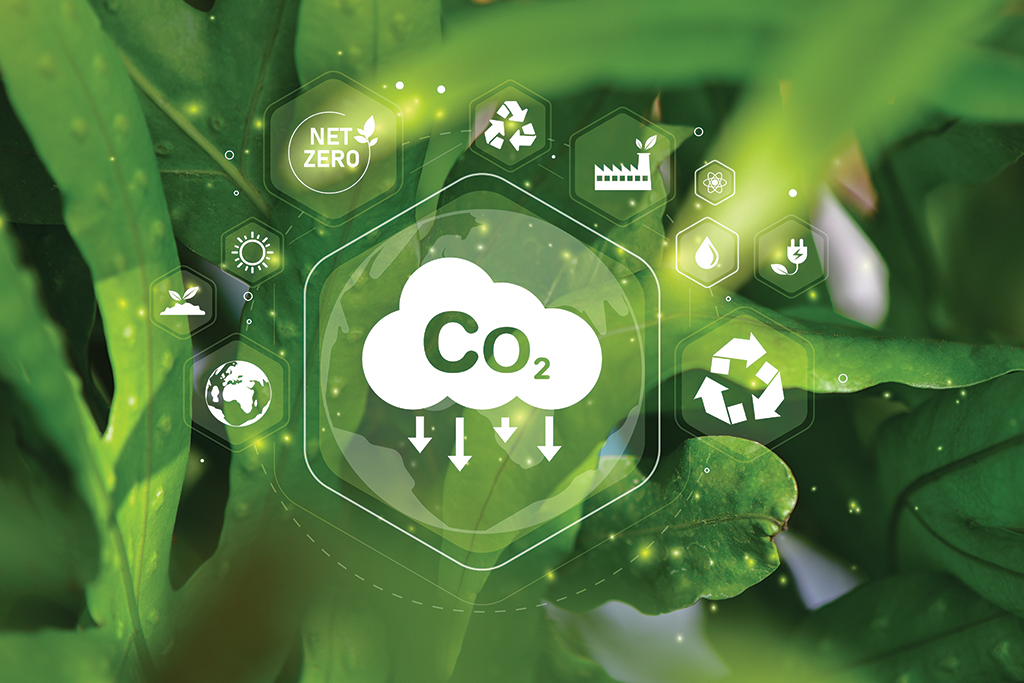Rising temperatures and extreme weather events are contributing to more hospital admissions and deaths every year. Changing weather patterns are impacting the spread of water-, vector- and food-borne diseases. Conditions ranging from asthma to obesity are being exacerbated by air pollution and suffocating heat.
Yet the industry tasked with improving health outcomes ranks as a major contributor to the climate crisis at hand. Global figures show that the healthcare sector’s climate footprint is equivalent to around 5% of net global emissions. This would make it the fifth highest-emitting country in the world, behind only China, the U.S., India and Russia.
At their core, health systems and pharmaceutical companies exist to make patients better. But if the byproduct of their efforts is a reduction in positive outcomes, the industry needs to take a hard look at its environmental practices.
Enter healthcare marketers and communicators. While as recently as five years ago there was minimal industry discussion around such topics, pressure has ratcheted to accept some responsibility for their role in the climate crisis and take meaningful steps to reverse the damage.
“We have seen this conversation come up more within the healthcare ecosystem,” acknowledges Dr. Elizabeth Baca, a managing director at Deloitte specializing in the future of health and health innovation. Previously these issues were discussed in a reporting context; now they have risen to the level of legitimate business concern, Baca adds.
Dr. Matthew Meyer, an assistant professor of anesthesiology and sustainable health researcher at the University of Virginia Health System, believes some big pharma companies have taken to the task at hand. He singles out Pfizer for the transparency of the environmental/climate impact dashboard on its public-facing website. The dashboard discloses many of the company’s scope 1, 2 and 3 emissions, as well as information on water consumption, waste disposal and energy use and how they have evolved over time.
Pfizer and its pharma peers need to think about the likelihood of not living in a world tightly aligned with the Paris Agreement and work toward building resistance against an increasingly hostile climate, notes Karan Chopra, COO at climate intelligence firm Cervest.
But the journey to sustainability for pharmaceutical companies and health systems won’t be a straight line. Most experts believe that enacting fundamental changes that simultaneously bolster the health of patients and the planet will face strong operational and regulatory headwinds.
In November 2022, several large pharma companies and public health institutions announced joint action to reduce emissions and accelerate the delivery of net-zero health systems through the Sustainable Markets Initiative Health Systems Task Force (SMI). Launched at COP26, the public/private partnership — which brings together a raft of industry A-listers, including leaders from AstraZeneca, GSK, Merck, Novo Nordisk, Roche, Samsung Biologics, Sanofi, Karolinska Institutet, the Sustainable Healthcare Coalition, UNICEF, the University of Pavia and the World Health Organization — has been celebrated as a significant milestone. Its whole-system approach focuses on three main areas driving health-related emissions: products and supply chains (50%); patient care, including care facilities and direct patient emissions (45%); and R&D (5%).
Most supply-chain emissions are driven by early-stage processes, such as raw material extraction processing, but they extend to material processing, drug synthesis, packaging and distribution. There is a need for manufacturers to work jointly with suppliers to decarbonize the entire supply chain — which is a complicated endeavor.
The SMI task force set near-term emission reduction targets aligned with the 1.5-degree goal of the Paris Agreement, which seeks to stop global average temperatures rising more than 1.5 degrees Celsius above pre-industrial levels, and net-zero emissions by 2045.
To get there, private sector members have committed to a set of common supplier standards, a switch to 80%-100% renewable power for their own operations by 2030, and an evaluation of power purchase agreements in India and China in 2023. They also intend to evaluate green heat solutions and green transportation corridors (both by 2025) and transition car fleets to zero-emission vehicles by 2030.
Chopra acknowledges an obvious caveat — that the global pharma supply chain is a complex beast — but believes this initiative represents a solid first step. It includes standardized ways to measure and account for scope 3 emissions (those not directly produced by an organization), which represents more of an “apples to apples” comparison, he says.

4A’s EVP, government relations and sustainability Alison Pepper agrees, adding that success will hinge on the industry’s ability to migrate its entire supply chain to the renewable energy grid. However, she notes that the task will be extra complicated for the pharma industry, as its supply chain processes are heavily reliant on fossil fuels to heat small molecule hydrocarbons. Meanwhile, many companies’ manufacturing operations are based in Asia, a region that isn’t building out renewable energy infrastructure at a particularly brisk pace.
That’s why Chopra believes the industry must devise incentives to change the behavior of its supply-chain partners. It’s not an impossible task, he adds, pointing to Walmart’s successful efforts to nudge its suppliers to change their standards. Such efforts, he says, have created a meaningful ripple effect.
Patient-care activities that generate a hefty percentage of healthcare-related emissions include hospital operations, waste and transportation. As with supply-chain emissions, reductions in patient-care-related emissions will require a collaborative effort among many stakeholders.
It’s a huge slate of asks: of clinicians and HCPs, to decarbonize their own care settings; of regulatory bodies, to adopt green criteria in labeling; of policymakers, to promote healthier lifestyles; of payers, to align coverage to emissions reduction; of patient groups, to standardize green care options; and of pharma, biotech and device companies, to redesign their offerings in line with better environmental practices.
The SMI taskforce has committed to the creation of end-to-end care pathway emissions calculation standards and tools for specific diseases. These would allow stakeholders to measure and track emissions across the care pathway.
But while the focus often falls on cutting emissions caused by operations and processes, many products themselves cause climate harm. By way of example, Meyer points to his own experience as an anesthesiologist and, specifically, the use of common general anesthetic desflurane.
The drug has a 20-year global warming potential (GWP20) of around 3700, meaning that it traps 3,700 times more energy than carbon dioxide, and is a major atmospheric contaminant. Meyer says that the medical and healthcare community isn’t well-versed on the role of current medicines in the climate crisis, but he believes there is ample opportunity for them to choose less climate-unfriendly alternatives. A desflurane substitute, sevoflurane, is about 10 times less environmentally harmful.
Other products can be actively addressed with alternatives. Pressurized metered-dose inhalers for respiratory conditions such as asthma account for approximately 3% of the total healthcare-related emissions from the U.K.’s National Health Service.
Joanna Ruiz, a managing director at Deloitte Digital, notes the smaller steps that, over time, can generate substantial positive change. She says, for example, that pharma companies might circumvent the flow of prescription drugs into the sewage system by arranging pickups of unused or expired products.
As for emissions from care settings, ultimately more patient care will be delivered via telehealth. However, Pepper warns that telehealth requires quite a bit of energy of its own. Like with so much else, the move to renewable energy sources can’t come soon enough.
R&D contributes around 5% of healthcare emissions. That figure has prompted the SMI task force to commit to leveraging digital health to decarbonize clinical trials as well as measure greenhouse gas emissions in Phase II and III trials. The goal would be to hit emission reduction targets in 2030.
Beyond such efforts, the broader healthcare industry will need to charge their innovators with developing sustainable products that address diseases likely to emerge as a result of climate change. Jon Bigelow, the just-retired executive director of the Coalition for Healthcare Communication, suggests that government regulators might incentivize companies to invest in developing antimicrobials to counteract climate-related shifts in infectious disease patterns.
Meyer, for his part, says he is actively working to create technology to make the operating room more sustainable. The problem? There isn’t much funding specifically allotted to healthcare sustainability efforts. Besides, he adds, the current regulatory environment doesn’t foster sustainability. Even if A-list organizations seek to lead, others likely won’t follow unless regulatory benchmarks and risk/benefit models are adjusted.
Then there’s the industry’s push toward net-zero emissions. The problem is that this goal can be misleading, given the potential to emit loads of carbon and achieve net-zero by purchasing carbon offsets. Meyer stresses that net-zero could result in many years of emissions without any reduction, which is why he prefers an absolute carbon emission metric. Chopra believes that quantifying the financial impact of climate change will lead to the creation of realistic incentives, investment priorities and business practices. In other words: Make it a shareholder issue.
Pepper similarly craves accountability, even if it ultimately means imposing penalties for not reaching emission and related sustainability targets. She proposes a sliding scale which accounts for regional discrepancies, and believes it should include provisions for the prevention of economic discrimination.
Pharma companies and healthcare systems aren’t likely to be motivated by regulatory decree alone. That’s why Chopra advises that climate goals need to be pushed in all areas of their business, from risk management and strategy to M&A plans and other operational decisions.
To send a strong message about their commitment to a healthy environment, Meyer thinks companies should appoint a chief sustainability officer and vest that individual with the same internal influence as the CFO and COO. CSOs, he says, should be charged with putting into place environmental practices that help their employers reap financial benefits — to help them do well while doing right, so to speak.
Pepper believes there’s a place for pre-competition collaboration in pharma and healthcare. While companies in the sector may be notoriously competitive, rallying around decarbonization and sharing best practices would almost certainly prove a net gain for the industry writ large.
Chopra worries, however, that the conversation around physical risk lags other industries. If healthcare organizations have detailed how they are protecting their assets and operations against climate volatility — the floods, heat waves, hurricanes and mega blizzards that will inevitably halt operations or alter optimal conditions for production — they’ve done so very, very quietly. Chopra says that while many companies have acknowledged the potential detrimental impacts of climate change, few have a solid contingency plan in place. Cervest’s climate intelligence platform helps companies plan for these worst case scenarios with proactive measures.
All of this affirms what should long have been obvious to healthcare leaders: Investing to reduce detrimental environmental impacts is good business for the short term and long, in economic boom periods and downturns alike. Will the industry heed the call? Here’s hoping it won’t take more substandard outcomes before we find out.
From the January 01, 2023 Issue of MM+M - Medical Marketing and Media







